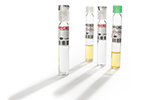-
Products
- Lab Instruments
-
Lab Meters and Probes
Calibration Standards Sension+ Meters and Probes
- Chemistries, Reagents, and Standards
-
Online Analysers
Ammonium Analysers Chlorine DioxideChlorine Analyzers
- CL17sc
- CL10sc Amperometric
- 9184 sc Amperometric
- Ultra Low Range CL17sc Colorimetric Chlorine Analyser
EZ Series Analysers- Iron
- Aluminium
- Manganese
- Phosphate
- Chloride
- Cyanide
- Fluoride
- Sulphate
- Sulphide
- Arsenic
- Chromium
- Copper
- Nickel
- Zinc
- Ammonium
- Total Nitrogen
- Total Phosphorus
- Phenol
- Volatile Fatty Acids
- Alkalinity
- ATP
- Hardness
- Toxicity
- Sample Preconditioning
- Boron
- Colour
- Nitrate
- Nitrite
- Silica
- Hydrogen Peroxide
- EZ Series Reagents
- EZ Series Accessories
- EZ sc Series Inorganics
- EZ sc Series Metals
- EZ sc Series Nutrients
-
Online Sensors and Controllers
Digital Controllers (Transmitters) Controllers (Analogue)
- SC4500
- Orbisphere 366x Ex
- Orbisphere 410/510 Carbon Dioxide
- Orbisphere 410/510 Oxygen
- Orbisphere 410/510 Ozone
- Orbisphere 51x Hydrogen
pH & ORP Sensors- 1200-S ORP
- 1200-S pH
- 12mm pH/ORP
- 8362 sc High Purity
- Combination pH/ORP
- Differential pH
- Digital Differential ORP
- Digital Differential pH
- LCP pH
Conductivity Sensors- 3400 Analogue Contacting
- 3400 Digital Contacting
- 3700 Analogue Inductive
- 3700 Digital Inductive
- 3798 sc Electrodeless
- 9523 Cation Conductivity
- 9525 DCCP System
-
Automated Lab Systems
Automatic Laboratory Analyser
- Samplers
- Test Kits & Strips
-
Microbiology
Prepared MediaKits Labware
- Accessories
- Funnels, Pumps & Manifolds
- Microbiology Filters
- Petri Dishes & Accessories
- Sampling Bags
- Vials, Tubes, Bottles & Racks
-
Lab Equipment and Supply
General Lab Consumables Books and Reference MaterialGlassware/Plasticware InstrumentsSafety Equipment Apparatus
- Claros Water Intelligence System
- Electrochemistry
- Parameters
- Industries
- Brands
- Service
- Support
- News & Events
RTC-MOV Software Module
Product #:
LXZ530 (A)
Unit Price
Contact Hach
How do you aerate efficiently when DO differs from zone to zone?
To achieve energy efficient—and therefore cost-efficient—aeration, your system must distribute process air from blowers at a minimum air pressure in the manifold, and with minimum pressure loss across each air valve.
Hach’s RTC-MOV Software can independently adjust air valve positions to achieve DO setpoints in up to 16 different zones while sending a total airflow setpoint to the existing blower control panel. Each valve’s position is determined by comparing a calculated airflow setpoint to the measured airflow for the zone. Airflow setpoints are calculated using the difference between measured DO and the DO setpoint (cascade controls), which can be input manually or automatically from an ammonia-based aeration controller. To ensure the most efficient distribution of air, the system’s controller evaluates the position of each air valve and provides that one valve is as open as possible in order to minimize system friction losses. The result is reduced costs and maximum available process air where it is needed most.
Claros Process Management solutions for nitrification/denitrification like RTC-MOV are designed to make the most of your plant’s real-world conditions by transforming every uncertainty into an opportunity for measurement, responsive action, and savings.
- Cost savings
- Maximum treatment potential
- Greater responsiveness
- Increased treatment capacity





